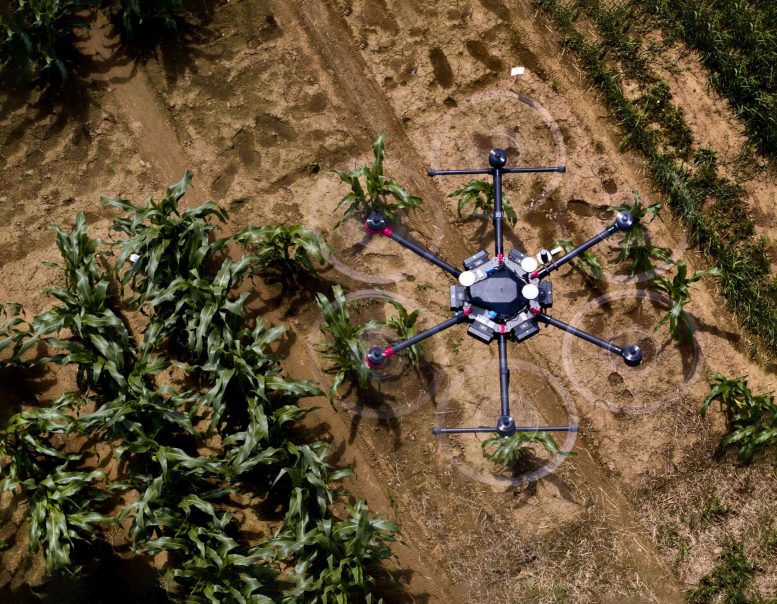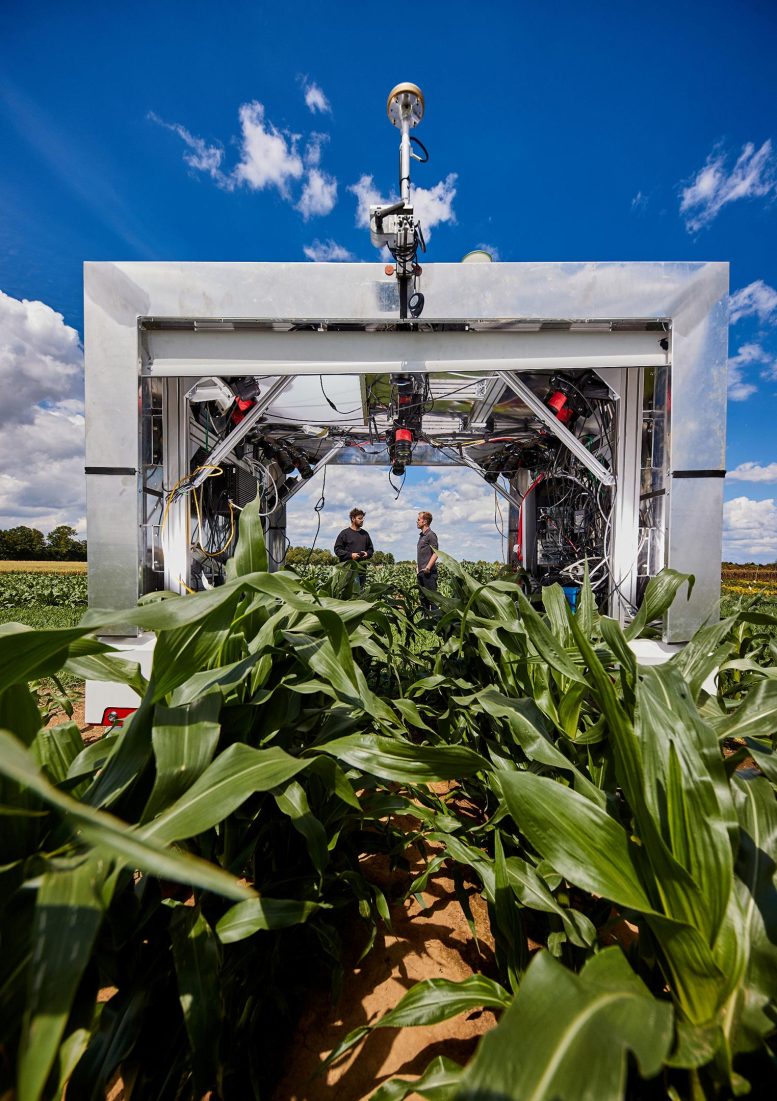
Among other things, researchers in the PhenoRob Cluster of Excellence at the University of Bonn are investigating the use of drones in agriculture. Credit: Volker Lannert / University of Bonn
AI and robotics are transforming agriculture, making it more sustainable and efficient through targeted interventions in crop management.
Researchers from the University of Bonn are revolutionizing farming by leveraging AI and new technologies to increase efficiency and sustainability. In a recent paper, published in the European Journal of Agronomy, the researchers have outlined key research questions that must be addressed to advance the smart digitization of agriculture.
The Modern Agricultural Challenge
Modern, high-performance agriculture has enabled the Earth to feed over eight billion people. However, this success comes with significant environmental costs. Current cultivation methods are endangering biodiversity, synthetic fertilizers contribute to greenhouse gas emissions, and agricultural chemicals are contaminating bodies of water and the wider environment.
Many of these issues can be mitigated through more precise agricultural methods. For example, applying herbicides only where weeds are problematic rather than across entire fields can reduce chemical use. Similarly, treating only diseased crops and applying fertilizers where truly needed can optimize resource use. However, such strategies are complex and challenging to implement on a large scale using traditional methods.

Information from various airborne or ground sensors are combined to help agriculture become much more efficient and environmentally friendly in the future. Credit: Ansgar Dreier / University of Bonn
Embracing Smart Technologies
“One answer could be to use smart digital technologies,” explains Hugo Storm, a member of the PhenoRob Cluster of Excellence. The University of Bonn has partnered with Forschungszentrum Jülich, the Fraunhofer Institute for Algorithms and Scientific Computing in Sankt Augustin, the Leibniz Centre for Agricultural Landscape Research in Müncheberg, and the Institute of Sugar Beet Research in Göttingen on the large-scale project geared toward making farming more efficient and more environmentally friendly using new technologies and artificial intelligence (AI).
The team includes experts from various disciplines, including ecology, plant sciences, soil sciences, computer science, robotics, geodesy, and agricultural economics. In their paper, they outline the steps they consider a priority in the short term. “We’ve identified a few key research questions,” Storm says. One of these relates to monitoring farmland to spot any nutrient deficiency, weed growth, or pest infestations in real-time. Satellite images provide a rough overview, while drones or robots enable more detailed monitoring. The latter can cover a whole field systematically and even record the condition of individual plants in the process. “One difficulty lies in linking all these pieces of information together,” says Storm’s colleague Sabine Seidel, who coordinated the publication together with him: “For example, when will a low resolution be sufficient? When do things need to get more detailed? How do drones need to fly in order to achieve maximum efficiency in getting a look at all the crops, particularly those at risk?”

Robots could also help improve the efficiency and environmental sustainability of farming. Credit: Volker Lannert / University of Bonn
Data Integration and Analysis
The data obtained provides a picture of the current situation. However, farmers are primarily interested in comparing the various potential strategies and their impacts. Questions like the tolerable amount of weeds, necessary fertilizer amounts, and the consequences of reducing pesticide use require precise answers. “To answer questions like these, you have to create digital copies of your farmland, as it were,” Seidel explains. “There are several ways to do this. Something that researchers still need to find out is how to combine the various approaches to get more accurate models.” Suitable methods also need to be developed to formulate recommendations for action based on these models. Techniques borrowed from SciTechDaily